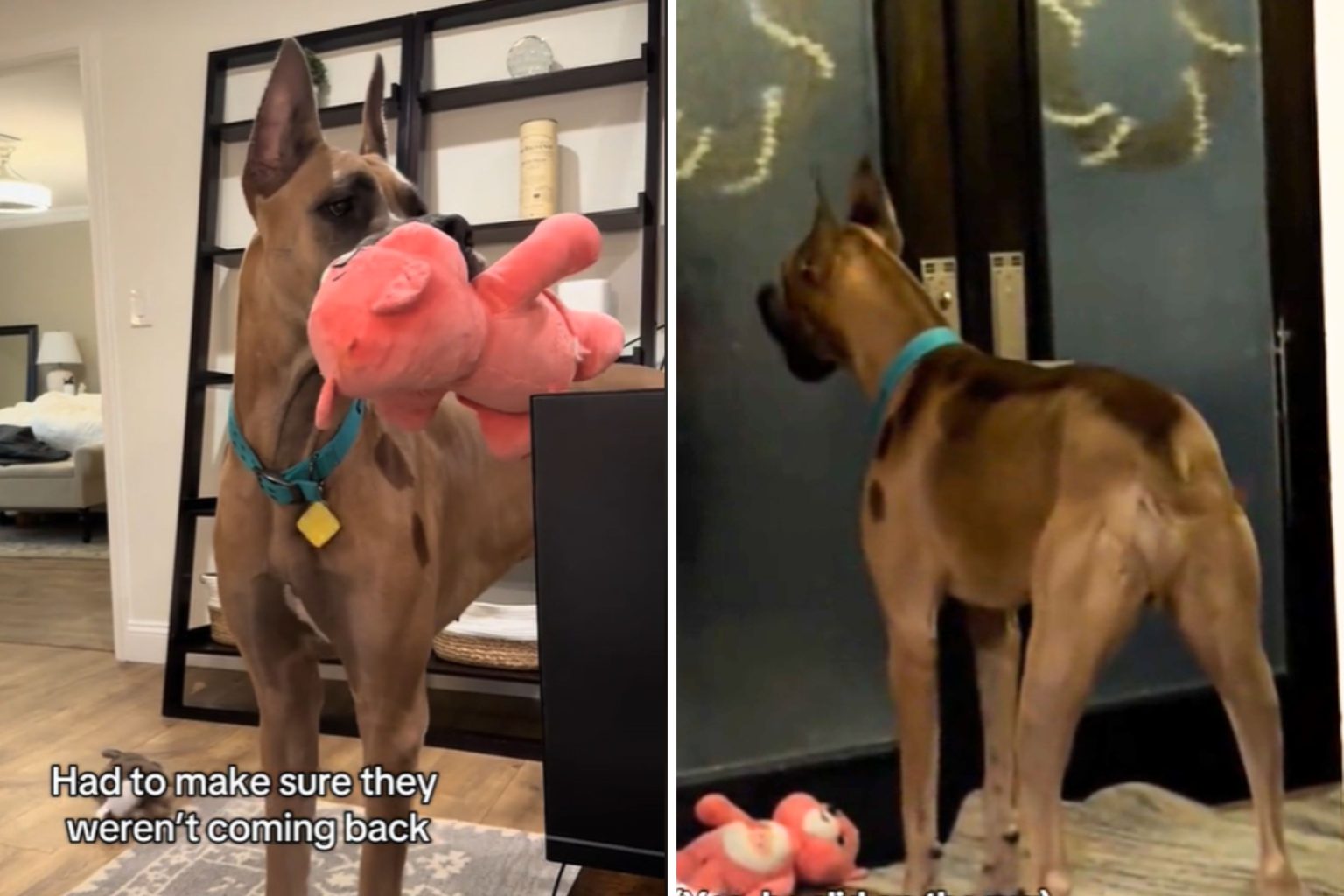Scooby, a one-year-old Great Dane belonging to TikTok user @thereal_scoobydoo, became an internet sensation after a video captured his hilariously conflicted reaction to the doorbell. His typical responses to visitors are either a barrage of barks or a swift retrieval of a toy as a welcoming gift. However, this time, Scooby’s reaction was a curious blend of both, showcasing his internal struggle between guarding his home and extending a friendly greeting. The video depicts Scooby dashing towards the door, toy in mouth and tail wagging, only to abruptly drop the toy and launch into a series of warning barks, his protective instincts momentarily overriding his initial welcoming impulse. This comical display of indecision charmed viewers worldwide, garnering millions of views and thousands of comments, many drawing playful comparisons between Scooby and his cartoon namesake.
Scooby’s confused reaction stems from the inherent conflict dogs often face when confronted with the doorbell. They are torn between their protective instincts, urging them to defend their territory and family, and their social nature, which often welcomes interaction with newcomers. This inner turmoil manifests in a variety of behaviors, from barking and jumping to excited tail wags and attempts to greet the visitor. Scooby’s case highlights this duality perfectly, demonstrating the complex emotional landscape dogs navigate when faced with seemingly simple events. His behavior, while amusing, underscores the importance of understanding and addressing a dog’s reaction to the doorbell, as excessive barking or jumping can be disruptive and stressful for both the dog and the owner.
The American Kennel Club offers guidance on desensitizing dogs to the doorbell, helping them react calmly to the sound. The process involves associating the doorbell sound with positive experiences, such as receiving high-value treats like peanut butter or engaging with a lick mat. By consistently pairing the doorbell ring with a rewarding activity, dogs gradually learn to view the sound as a positive cue rather than a trigger for anxiety or excitement. This method, known as counter-conditioning, aims to replace the dog’s negative association with the doorbell with a positive one, effectively reducing their stress and promoting a more relaxed response.
The desensitization process can be further refined by incorporating a designated spot for the dog to go to when the doorbell rings. This adds a layer of predictability and control to the situation, further alleviating the dog’s anxiety. By consistently rewarding the dog for going to their designated spot upon hearing the doorbell, owners establish a clear routine that helps the dog anticipate and manage their reaction. Over time, the doorbell sound becomes a cue for the dog to retreat to their safe space and await a reward, effectively transforming a potentially stressful event into a positive and predictable one.
This training method also incorporates verbal cues, such as “go to bed,” to reinforce the desired behavior. As the dog becomes more accustomed to the routine, the treat lure can be gradually phased out, with the verbal cue alone becoming sufficient to elicit the desired response. This method empowers the dog by providing a clear set of expectations and predictable outcomes, reducing their anxiety and promoting a calmer, more controlled reaction to the doorbell. The ultimate goal is to transform the doorbell ring from a trigger for stress and excitement into a neutral cue that signals a predictable and positive routine.
Scooby’s viral video, while entertaining, serves as a reminder of the complex emotions dogs experience in response to seemingly mundane events like the doorbell. By understanding these complexities and employing positive reinforcement techniques like desensitization and cue training, owners can help their dogs navigate these situations with greater ease and confidence, fostering a more harmonious and less stressful environment for both pet and owner. The video’s popularity also underscores the powerful connection people have with their pets and the widespread appreciation for their often humorous and endearing behaviors.

